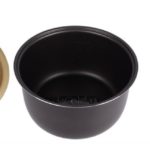The multicooker is a very useful invention. This household appliance very quickly gained popularity among homemakers. However, all its useful functions can be appreciated only when the model is chosen taking into account all the needs.
Among other questions that arise when choosing, the following is relevant: which bowl is better for a multicooker? What are they, in fact, are and what are the pros and cons of this or that coating? We’ll talk about this.
Pros and cons of non-stick Teflon coating
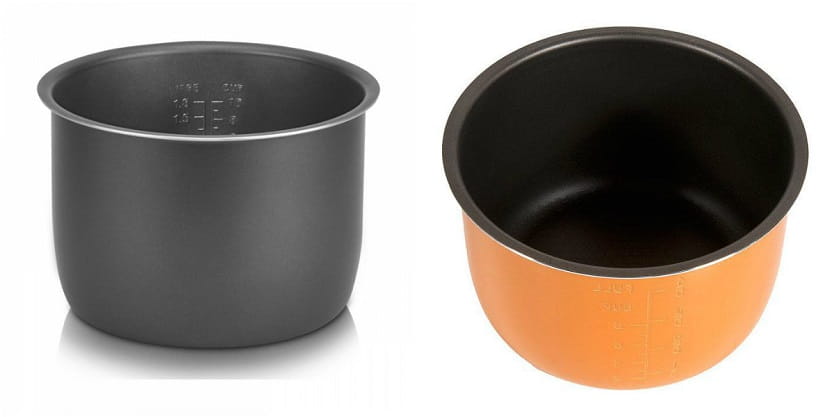
The most popular material for making pots used in multicooker is Teflon. This material is considered to be quite reliable and safe, and is inexpensive. Scientists claim that the substances released by the Teflon coating when heated do not harm human health and are quickly eliminated from the body.
If you follow all the rules and tips for caring for the Teflon coating, a saucepan made of this material will last you at least 2-3 years. But after this time, no matter how hard you try, the cup will lose its original appearance and properties and will have to be replaced.
The main advantages of teflon:
- resistant to high temperatures, able to withstand heating up to 250 ˚С;
- when used correctly, retains non-stick properties for a long time;
- weakly susceptible to the effects of household chemicals;
- Can be washed in the dishwasher;
- has a smooth surface and is resistant to carbon deposits.
Severe flaws:
- with improper care, it is quickly scratched and damaged;
- when heated above 260 ° C, it can release toxic substances into food;
- is not too cheap.
![]() See also - Choosing the best Panasonic multicooker
See also - Choosing the best Panasonic multicooker
Disadvantages and advantages of ceramics
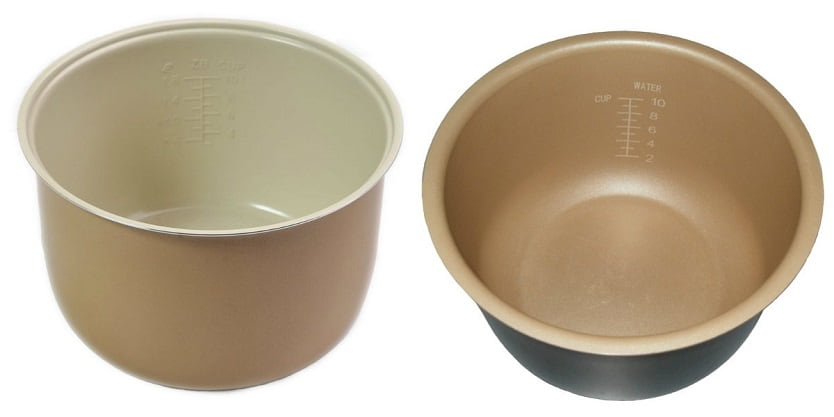
If you don't know for sure which multicooker bowl to choose, take a look at the ceramic coated pots. This material also has non-stick properties. In addition, ceramics are highly resistant to mechanical stress. It is the right choice for both home and professional kitchens.
In addition to the above, there are other reasons to buy a ceramic bowl:
- this material is completely safe and environmentally friendly;
- It has excellent non-stick properties;
- can heat up to temperatures above 450 ˚С, although you are unlikely to cook at such a temperature;
- when heated, it does not emit any harmful substances, as it consists of water and natural clay;
- can be washed with any detergent.
It has such a bowl and disadvantages:
- in case of sudden temperature changes, the ceramic bowl may burst, so you must not put a hot pan under a stream of cold water;
- such a bowl cannot be washed in a dishwasher, only manual cleaning;
- as the ceramics wear off, non-stick properties will deteriorate;
- the price of ceramic pots for multicooker is much higher.
In general, all the disadvantages, except for cost, are relatively arbitrary. They do not cause any inconvenience during operation. The ceramic coating is obviously superior to Teflon in terms of safety and quality of use.
See also:
- Top popular multicooker from the manufacturer Polaris
- 5 best pressure cookers to according to customer reviews
- 5 best multicookers ENDEVER according to customer reviews
- 5 best multicookers Tefal of the year
Pros and cons of stainless steel bowl
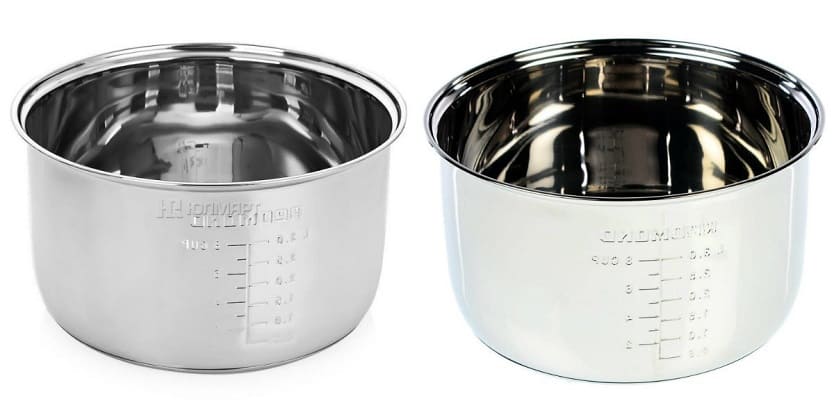
Consideration of the question of which coating of the multicooker bowl is better is impossible without discussing the features of another material - stainless steel. Such coverage is not so common, but it is still there. Models with conventional steel bowls are, rather, in the budget category. And they have their own merits:
- quality and reliability, long service life;
- resistance to corrosion and almost any mechanical damage;
- does not cause allergic reactions;
- does not give dishes a “metallic” flavor;
- such a bowl can be used as a separate kitchen appliance and cooked in it simply on the stove.
This material also has disadvantages:
- dishes can pester the bottom and walls;
- oxidation may occur when using certain types of products;
- since the material does not transmit heat very evenly, the baked goods will not have a crispy crust.
What material to prefer?
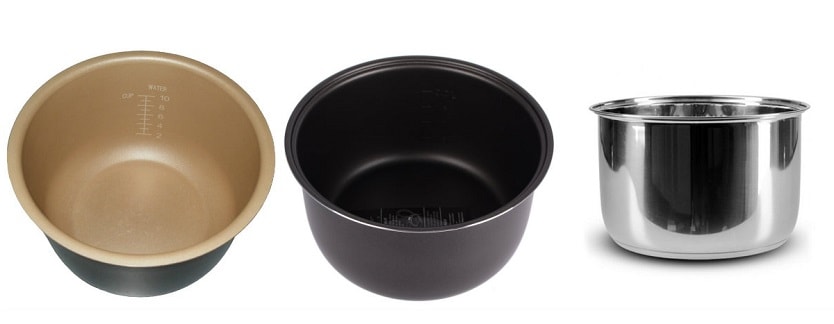
So which bowl is better: Teflon or ceramic? Or maybe you prefer steel? It is impossible to unequivocally answer this question. It all depends on what kind of dishes you are going to cook most often and how you will handle the device.
If you want to have a universal option, it is better to choose teflon. It is suitable for all types of dishes. Such a bowl will serve you for several years, of course, if you handle the saucepan carefully.
If you want versatility and do not want to overpay, choose the option of steel. Such bowls can be used as a separate dish. It can be used as a baking dish or bowl for mixerput on an open fire. In addition, multicooker with a stainless steel bowl is much cheaper. Thus, you can save a little.
Ceramic bowls are the most expensive, but at the same time the safest coating. If you have small children in your family, this pot is probably the best choice. True, in comparison with Teflon, it will last much less.
Many models of multicookers provide the ability to use interchangeable bowls. So you can purchase additional options with different coatings and use them as needed.
See also:

